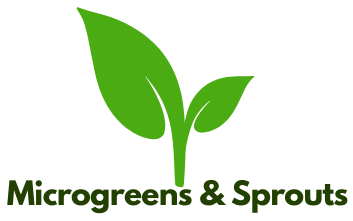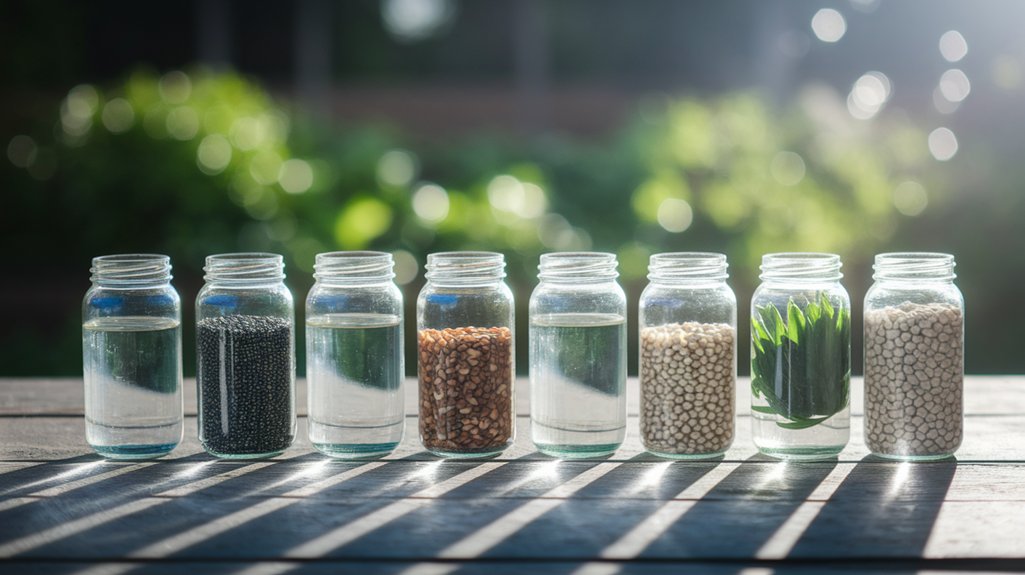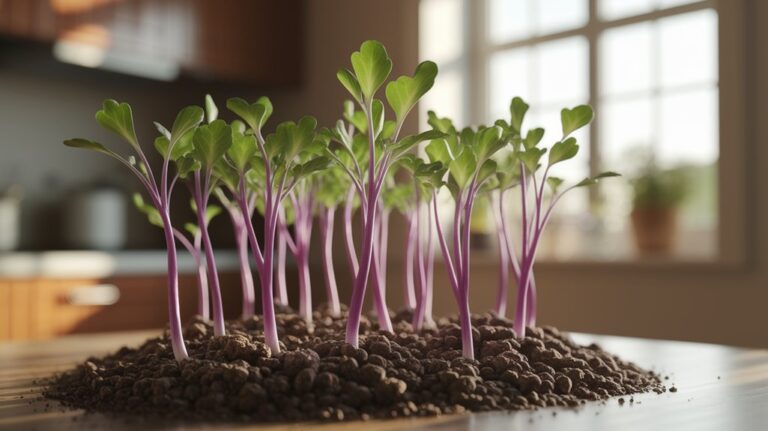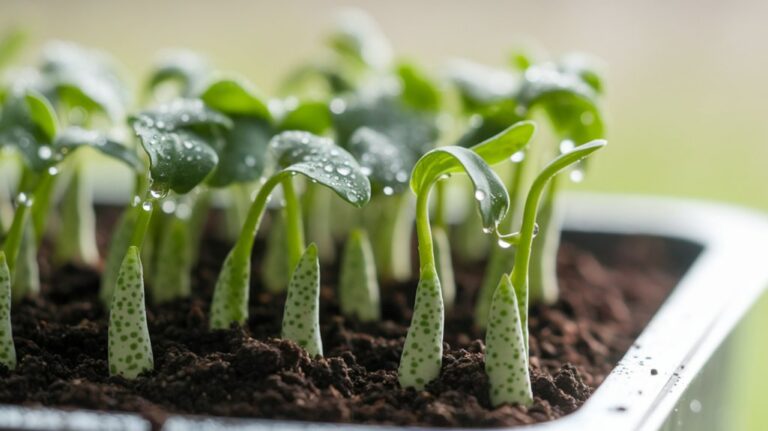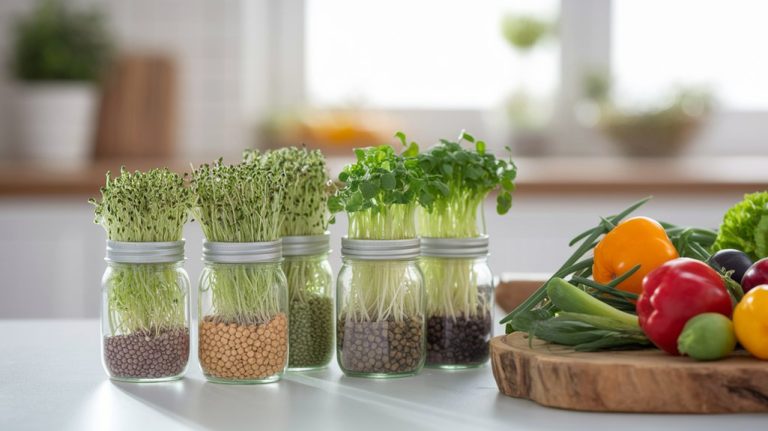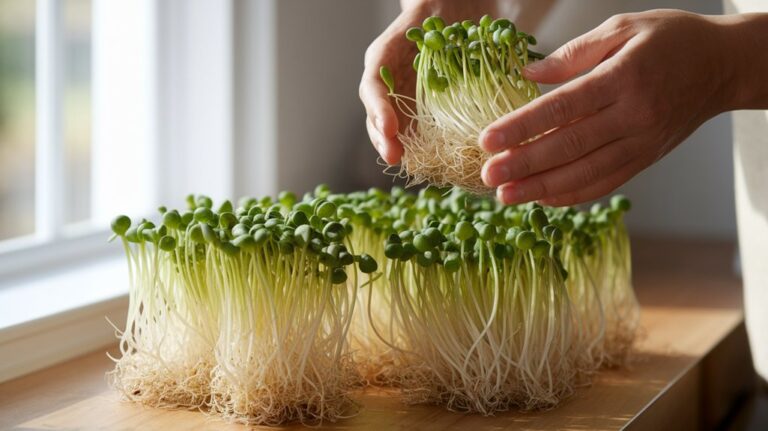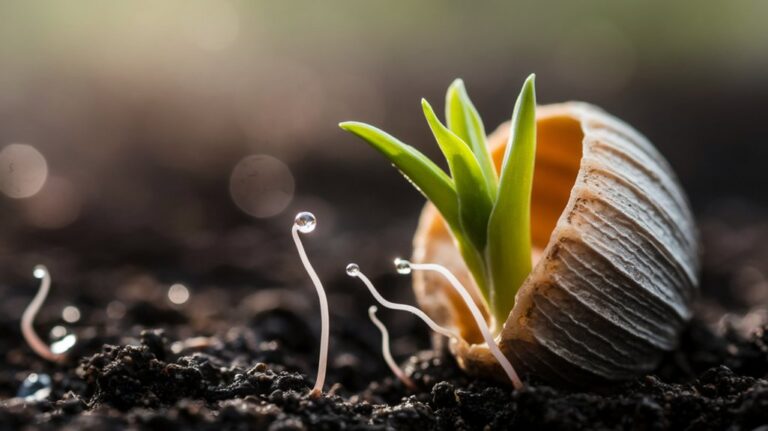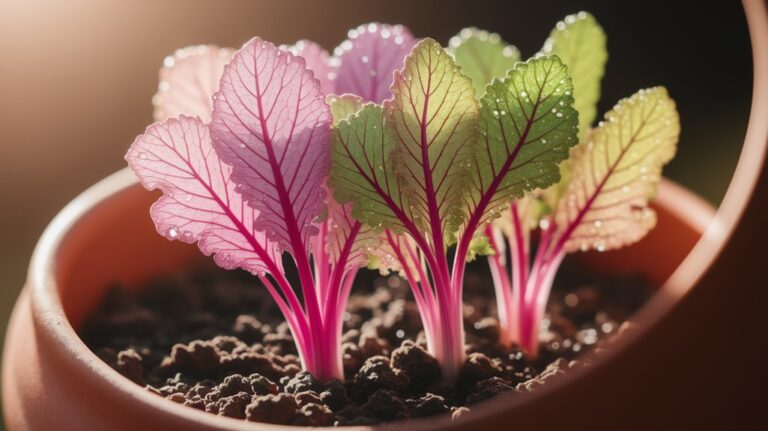Seed Soaking Secrets: Improve Germination and Flavor
I’ve found that soaking seeds can significantly boost germination rates and enhance crop flavors. It’s all about mimicking natural conditions: water softens the seed coat, activates enzymes, and helps leach out germination inhibitors. For best results, I soak seeds for the ideal duration, using room temperature water and keeping them fully submerged. Avoid common mistakes like using chlorinated water or over-soaking. If you want to maximize your growing potential, there’s a bit more I can share with you.
Key Takeaways
- Soak seeds in room temperature water for optimal hydration without shocking them, enhancing germination rates.
- Follow specific soaking times for different seeds to prevent rot and ensure effective moisture absorption.
- Use weights to keep seeds fully submerged, ensuring even soaking and preventing floating.
- Rinse seeds gently after soaking to remove any potentially harmful residues and increase viability.
- Proper seed soaking can enhance flavor through improved nutrient uptake during the germination process.
The Science of Seed Soaking
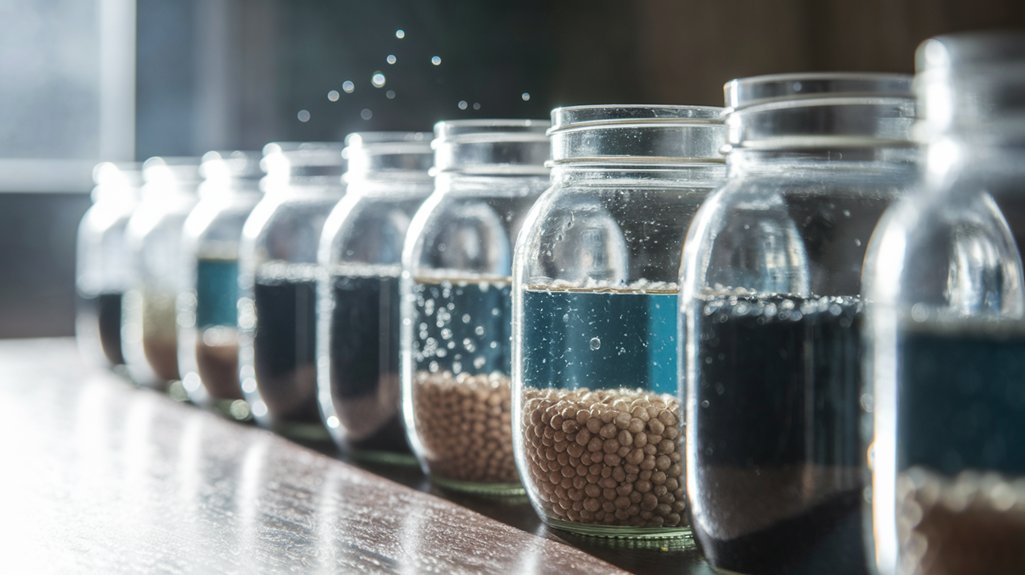
When I first learned about seed soaking, I was intrigued by the science behind it. Soaking seeds initiates the germination process by mimicking natural conditions. Water penetrates the seed coat, activating enzymes that kickstart metabolic activities.
This hydration phase effectively softens the seed coat, allowing oxygen to reach the embryo, which is crucial for cellular respiration. Additionally, soaking can help leach out allelochemicals, substances that inhibit germination.
The temperature and duration of soaking play critical roles; too long can lead to rot, while too short may not sufficiently activate the seed. By understanding these mechanisms, I can optimize my seed soaking practices, ensuring a more efficient germination process that prepares the seeds perfectly for planting.
Benefits of Soaking Seeds
Soaking seeds offers several distinct advantages that can enhance the overall germination process and plant health.
First, it helps to break down the seed coat, allowing moisture to penetrate more effectively. This accelerates germination and can lead to more uniform sprouting. I’ve noticed that seeds soaked for a few hours often germinate faster compared to dry seeds.
Additionally, soaking can help to leach out inhibitors that may otherwise impede germination. The process also encourages stronger root development, as the seeds have immediate access to moisture.
Finally, I’ve found that soaking enhances the flavor of certain crops, likely due to improved nutrient uptake during early growth stages.
How to Properly Soak Seeds
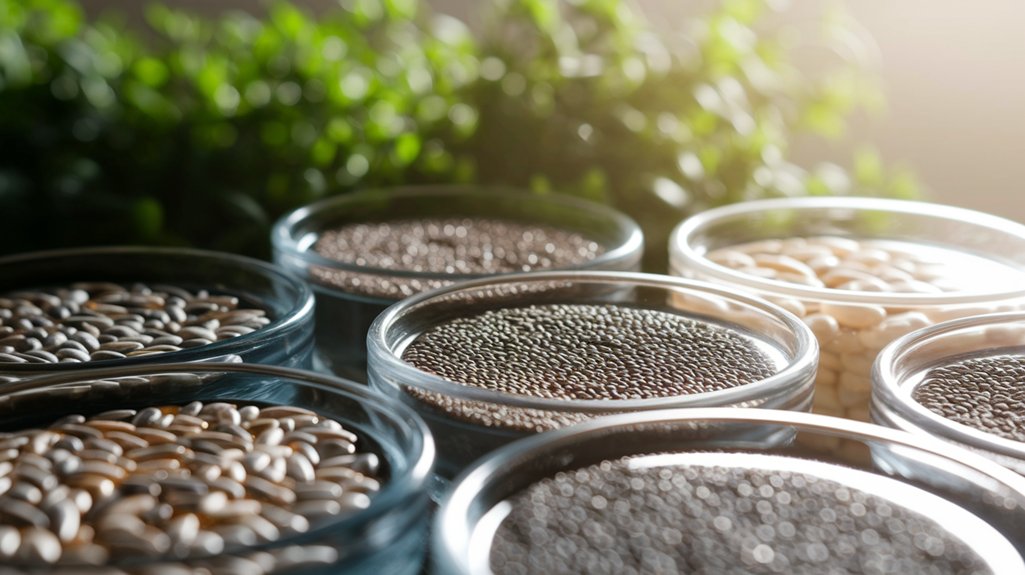
To properly soak seeds, it’s crucial to understand the benefits and the optimal soaking duration.
I’ll guide you through the best watering techniques to maximize germination rates and ensure your seeds are well-prepared for planting.
Benefits of Seed Soaking
Although many gardeners overlook the process, soaking seeds offers significant advantages that can enhance germination rates and improve plant vigor.
By soaking seeds, I essentially mimic natural conditions, allowing moisture to penetrate the seed coat. This activation of enzymes accelerates metabolic processes, resulting in quicker germination.
Additionally, soaking can help break dormancy in certain seeds, making them more viable. I’ve noticed that seeds soaked before planting tend to germinate more uniformly, reducing the time I spend waiting for sprouts.
Moreover, pre-soaking can also help leach out any potential seed coat inhibitors, promoting healthier seedlings.
Ultimately, incorporating seed soaking into my gardening routine has proven to be a simple yet effective technique for nurturing robust plants.
Soaking Duration Guidelines
Properly soaking seeds involves understanding the right duration for each type, as the time required can vary significantly. Over-soaking can lead to seed rot, while under-soaking may hinder germination.
Here’s how I approach soaking different seeds:
- Beans: 8-12 hours for optimal moisture absorption.
- Peas: 12-24 hours; they benefit from extended soaking.
- Corn: 8-10 hours; this helps to soften the hard outer shell.
- Squash: 6-8 hours; too long can cause mushiness.
- Tomatoes: 4-6 hours; just enough to kickstart germination.
Best Watering Techniques
How can I ensure that my seeds soak effectively? The key lies in using the right technique.
First, I fill a container with room temperature water, as extreme temperatures can shock the seeds. I then submerge the seeds fully, ensuring they’re not floating, as this can lead to uneven soaking. I like to use a weight, like a clean rock, to keep them submerged.
I monitor the soaking time closely, as too long can cause seeds to rot. After soaking, I rinse the seeds gently to remove any residue.
Finally, I plant them immediately to maximize germination potential. By following this method, I can optimize both germination rates and the flavor profile of the resulting plants.
Ideal Soaking Times for Different Seeds
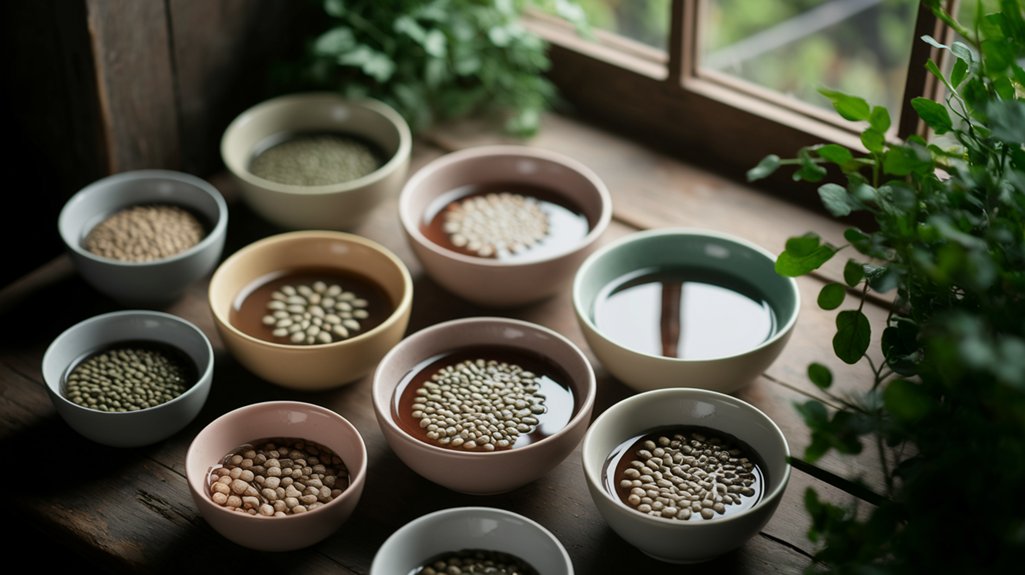
Understanding the ideal soaking times for different seeds is crucial for successful germination.
I’ll explore common soaking durations, the factors that can influence these times, and the recommended methods for effective soaking.
Common Seed Soaking Times
While soaking seeds can significantly enhance germination rates, the ideal soaking times vary by seed type and can impact overall growth.
I’ve found that adhering to specific soaking durations can optimize results. Here’s a quick reference for some common seeds:
- Beans: Soak for 8-12 hours.
- Peas: Soak for 8-12 hours.
- Corn: Soak for 12-24 hours.
- Sunflowers: Soak for 8-12 hours.
- Tomatoes: Soak for 24 hours.
Factors Influencing Soaking Duration
As I dive deeper into the seed soaking process, it becomes clear that several factors influence the ideal soaking duration for different seeds. Seed type, size, and age can drastically affect how long they should soak. For instance, smaller seeds may require less time, while larger seeds can benefit from extended soaking. Additionally, older seeds might need longer soaking periods to ensure proper germination.
Here’s a quick reference table on soaking durations:
| Seed Type | Soaking Duration |
|---|---|
| Beans | 8-12 hours |
| Peas | 4-8 hours |
| Corn | 12-24 hours |
| Cucumber | 6-12 hours |
Understanding these factors allows me to optimize germination and enhance flavor in my gardening endeavors.
Recommended Methods for Soaking
To ensure seeds absorb moisture effectively, I’ve discovered that employing specific soaking methods can significantly enhance germination rates.
Different seeds require varying soaking times to optimize their potential. Here’s a breakdown of recommended soaking durations for some common seeds:
- Beans: 8-12 hours
- Peas: 8-10 hours
- Corn: 12-24 hours
- Squash: 4-6 hours
- Radishes: 2-4 hours
Common Mistakes to Avoid
Even though soaking seeds can significantly enhance germination rates, many novice gardeners make critical mistakes that undermine their efforts. Here are some common pitfalls to avoid:
| Mistake | Consequence | Solution |
|---|---|---|
| Soaking too long | Seeds may rot or develop mold | Soak for 6-24 hours only |
| Using chlorinated water | Chemicals can harm seed viability | Use filtered or rainwater |
| Ignoring seed type | Different seeds have unique needs | Research specific requirements |
| Not drying seeds properly | Excess moisture can cause rot | Pat seeds dry with a towel |
| Overcrowding in the soak | Insufficient water penetration | Soak seeds in a single layer |
Enhancing Flavor Through Soaking
While many gardeners focus solely on germination, soaking seeds can also enhance the flavor of certain crops, a benefit often overlooked.
By soaking seeds before planting, I’ve noticed an improvement in taste due to the activation of enzymes that influence flavor profiles. This process allows the plant to better absorb nutrients and water, resulting in a more robust flavor.
Here are some crops where soaking can enhance flavor:
- Tomatoes: Soaking can intensify sweetness.
- Peppers: Enhances spiciness and aroma.
- Beans: Improves earthy undertones.
- Carrots: Boosts sweetness and crispness.
- Radishes: Heightens their peppery bite.
Experimenting with soaking times can yield remarkable results, allowing you to enjoy a more flavorful harvest.
Frequently Asked Questions
Can I Soak Seeds in Saltwater for Better Germination?
I wouldn’t recommend soaking seeds in saltwater for better germination.
While some studies suggest salt can enhance certain traits, it often leads to dehydration and stress in seeds, negatively impacting germination rates.
Instead, I prefer using plain water or specific treatments designed for seed enhancement.
It’s crucial to ensure the seeds receive optimal conditions for growth, as this will ultimately yield healthier plants.
Always prioritize best practices for successful germination.
How Does Soaking Affect Seed Storage Lifespan?
Soaking seeds can significantly impact their storage lifespan.
When seeds absorb water, they begin metabolic processes, which can reduce their viability over time if not planted soon.
I’ve noticed that seeds soaked before storage tend to lose their lifespan quicker, as they enter a state of dormancy.
To maximize longevity, I recommend keeping seeds dry and cool, avoiding soaking until you’re ready to germinate them for optimal results.
Is It Necessary to Soak All Types of Seeds?
Not all seeds need soaking, but it can benefit many. I’ve found that larger seeds, like beans and peas, often germinate better when soaked, as it softens their tough outer coats.
However, tiny seeds, like lettuce, don’t typically require soaking since they germinate quickly.
Each seed type has unique requirements, so I always check specifics before deciding whether soaking is necessary. It’s all about optimizing germination for the best results.
Can I Use Tap Water for Soaking Seeds?
Yes, you can use tap water for soaking seeds, but I recommend considering its quality.
Tap water often contains chlorine and other chemicals that might affect germination. I’ve found that using filtered or distilled water can enhance the soaking process, promoting healthier seeds.
If you choose tap water, let it sit for 24 hours to allow chlorine to dissipate.
Ultimately, the goal is to provide the best environment for your seeds to thrive.
What Temperature Should the Soaking Water Be?
When soaking seeds, I’ve found that the ideal water temperature is around 70°F to 80°F (21°C to 27°C).
This range promotes optimal hydration without shocking the seeds. Using water that’s too cold can slow down the soaking process, while water that’s too hot can damage the seeds.
I always aim for that sweet spot to ensure the best results, enhancing germination and overall seed health.
It’s a simple yet crucial step in preparation.
Conclusion
In conclusion, incorporating seed soaking into your planting routine can significantly enhance both germination rates and flavor profiles. By understanding the science behind soaking, adhering to proper techniques, and avoiding common pitfalls, you can optimize your gardening efforts. Experiment with different soaking times for various seeds to unlock their full potential. With these insights, you’ll not only boost your harvest but also enjoy richer, more vibrant flavors in your homegrown produce. Happy gardening!
